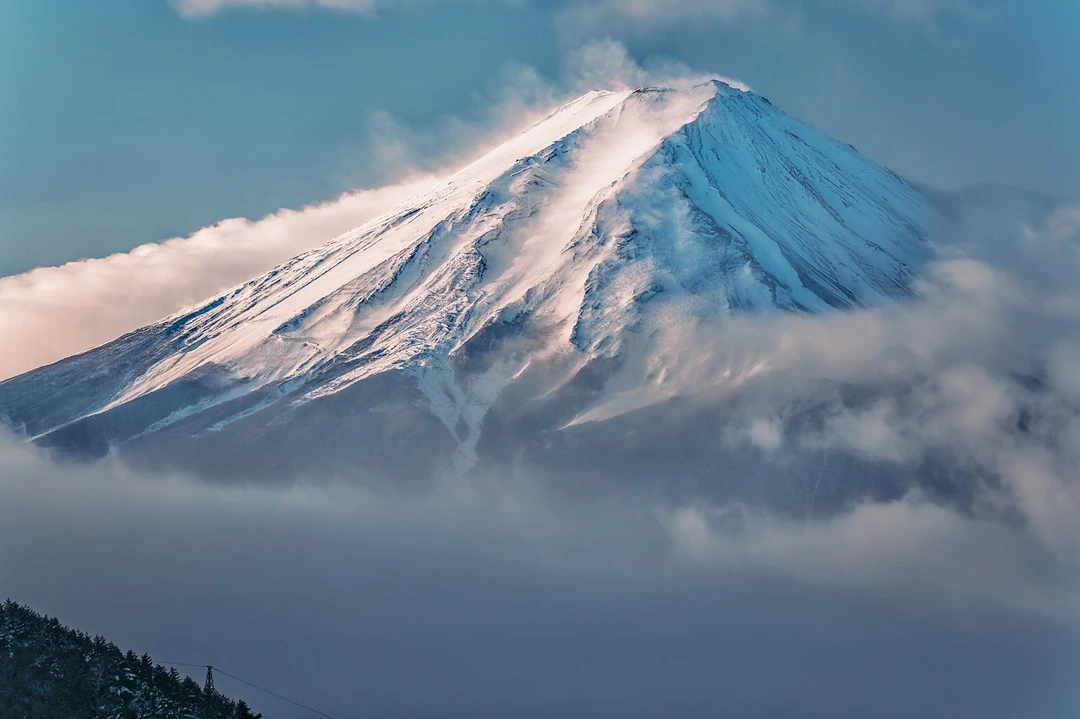A 27-year-old Chinese student living in Japan was twice rescued from Mount Fuji within four days after taking the risky move of going back to the mountain to try and pick up his lost cell phone. The double rescue set off an outburst of comment in Japan concerning the risks of climbing outside of season and the strain such rescues cause to rescue efforts.
First Rescue: April 22
On 22 April, the student had set out climbing Mount Fuji along the Fujinomiya route, which begins at about 2,400 meters (7,874 feet) above sea level. Reaching about 3,000 meters (9,843 feet), he got very bad altitude sickness symptoms like dizziness, nausea, and shortness of breath. In addition, he lost his crampons — required gear for crossing the icy surface — so there was no way he could descend safely.
Realizing the critical condition, he called emergency services, and a rescue operation was initiated. A helicopter sent by Shizuoka Prefecture officials flew him down from the mountain and took him to a local hospital for treatment. Officials at the time stated that he was lucky to have made it, given the difficult weather conditions and his absence of proper mountaineering gear.
Second Rescue: April 26
In spite of this near-death experience, the student went back to Mount Fuji on April 26 in order to retrieve his phone and other items left behind during the rescue. Once again climbing through the same trail, he reached around 3,000 meters before being overcome by altitude sickness for the second time.
Another climber discovered him paralyzed and immobile. Emergency responders were called again, and a second rescue team was sent to the scene to help. The climber was hospitalized for assessment, and although he did not have life-threatening injuries, officials once again emphasized the severity of his condition and the extreme danger in which he had placed himself.
Mount Fuji’s Off-Season Risks
At 3,776 meters (12,388 feet), Mount Fuji is Japan’s highest and most iconic mountain. Its climbing season technically lasts from early July to early September, when trails are cared for, huts and medical stations are staffed, and the weather remains relatively stable.
Beyond this window, scaling Mount Fuji is perilously dangerous. Blowing snow, freezing temperatures, stiff breezes, and the inability to find habitable shelters combine to create grievous dangers. In spite of notices from the Japanese government and trailhead postings, some mountain climbers still take on off-season climbs — in many cases misjudging the risks of the mountain.
Though not prohibited by law, off-season climbing is discouraged in strong terms. During winter and spring months, rescues become immensely more difficult and dangerous for rescue units, necessitating helicopters, experienced mountain units, and massive resources.
Public Response and Argument Regarding Rescue Costs
The actions of the student have evoked public anger on Japanese social media, with most criticizing his inattention to repeated warnings and putting rescuers’ lives at risk. Some said that those who indulge in careless climbing should be made to pay the costs of their rescue, a practice already in place in some areas of Europe and North America.
“If one puts other people’s lives in danger twice within four days due to a missing phone, at least they should cover half the cost of the rescue,” one user on X (formerly Twitter) commented.
At present, Japan does not bill rescued climbers for emergency services on Mount Fuji. Nevertheless, increasing incidents such as this one have revived arguments over whether new legislation should be enacted to fine or financially penalize climbers who disregard seasonal restrictions or do not carry appropriate equipment.
Yasuo Tanaka, a professor at Tokyo University and an expert on disaster management, said, “We have to balance individual freedom with public security. Rescue supplies are limited. Irresponsible actions take away these supplies from those who could actually be trapped in unexpected circumstances.”
New Safety Regulations in 2025
Beginning this summer, significant reforms will take effect to control Mount Fuji climbers. Along with a compulsory 4,000 yen (approximately $28) charge to ascend the mountain through the four main trails, a daily limit of 4,000 climbers per route will be enforced to mitigate over-tourism and environmental deterioration.
In addition, new signage will be erected along trails advising of off-season risks in multiple languages, and authorities are pondering mandating climbers to preregister the route they intend to climb and when they expect to return, much like the systems that govern Mount Everest ascents.
Within Shizuoka and Yamanashi Prefectures, the local governments stated that they could reconsider other measures, such as seasonal closure of trails and potential fines for climbing outside seasons without permission.
A Lesson for Future Climbers
The double rescue has become a cautionary tale, particularly for foreign tourists who might not be aware of Japan’s distinctive mountain safety culture. Mount Fuji is frequently idealized in international media as a “must-climb” destination for tourists, but the truth is much tougher, particularly outside the short climbing season.
Officials continue to warn climbers to obey local regulations, be properly prepared, and not take unnecessary risks. As one Shizuoka official put it in a press conference, “Mount Fuji is lovely but hazardous. It requires respect from all who try to climb it.”
In the meantime, the student is being monitored in hospital, recovering from his two close calls on Japan’s holiest mountain.







